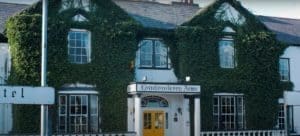Modern Myths: Exploring Urban Legends from Around the World

Updated On: April 16, 2024 by Noha Basiouny
Urban legends, those compelling tales whispered in hushed tones, weave the fabric of modern mythology across cultures worldwide. These stories blur the lines between truth and fiction, often rooted in local histories or popular culture, and are transmitted through generations, adopting new twists with each telling. The essence of these legends lies in their common themes, ranging from horror and superstition to humour and moral lessons. Some have even evolved with the help of media, embedding themselves in the collective psyche and creating a bridge between folklore and our digital age.
As a global collection of narratives, exploring urban legends offer an intriguing glimpse into the fears and values of a society. Whether it’s the alluring mystique of legendary creatures or the unsolved mysteries that baffle law enforcement and amateur sleuths alike, these myths embody the psychological underpinnings that captivate us. While some legends are easily debunked, others persist, shrouded in mystery, and continue to fascinate. They not only entertain but also provoke reflection on the cultural impact they wield, shaping our perceptions of the unknown and the unseen.
Table of Contents
Origins of Urban Legends

In exploring the foundations of urban legends, we uncover a complex tapestry of human history and psychology. Our beliefs and narratives are not merely tales but are woven from the threads of our past.
Historical Roots
Urban legends, often gripping and morbid, are a modern continuation of ancient folklore and mythology. They serve as our era’s folklore, evolving through oral tradition and media to reflect contemporary concerns. A prime example is the fable of Candyman, which showcases how historical figures can morph into legendary spectres over time.
Societal Fears and Folklore
These stories also manifest societal fears, acting as cautionary tales that reinforce cultural norms and values. They offer an insight into our communal psyche, portraying anxieties about the unknown or the misunderstood. For instance, modern technology fears materialise in tales of haunted internet forums or cursed mobile numbers, akin to the banshees or wraiths of yore. As we share these narratives, from the Loch Ness Monster to the 27 Club, they reflect our collective apprehensions and fascinations. Through the lens of these stories, we try to make sense of our world, anchoring the abstract fears of today in the origins of our shared folklore.
Psychology Behind the Fear

Urban legends tap into the primal emotions of fear and horror. They often explore themes that resonate with universal anxieties, weaving narratives that provoke a psychological response at a deep, often unconscious level.
Impact on Human Psychology
We understand that urban legends can have a substantial impact on human psychology. They often contain elements of horror and shock, which trigger our fight or flight response. This response is a deeply ingrained survival mechanism that heightens our emotions and etches the stories into our memories. The legends evoke fear because they usually involve relatable scenarios that could, theoretically, happen to any one of us.
Role of Suspense and Thrill
The suspense and thrill in urban legends serve a particular purpose. These stories are designed to keep us on the edge of our seats, delivering a dose of adrenaline as we anticipate the unfolding of scary events. It’s this mixture of anticipation and uncertainty that contributes to the overall excitement and engagement with these tales. Such elements ensure that urban legends remain compelling to us, as we’re hardwired to seek out stories that evoke strong emotional responses.
Common Themes in Urban Legends
Urban legends share thematic elements that resonate with fundamental human emotions and cultural fears. These tales frequently combine elements of the supernatural and the threat of real-world dangers, often served with a twist of humour.
Supernatural and Paranormal
Urban legends with a supernatural or paranormal twist often feature ghosts who linger in the living world, imparting warnings or simply providing a fright. These stories exploit our innate fear of the unknown and the intriguing notion of life beyond death. They can range from a benevolent spirit knocking on car windows to a chilling apparition seen on the second floor of a building by someone who then realises there’s no ground beneath the ghost.
Murders and Threats
The theme of murder features prominently in urban legends, often intertwined with the notion of a threat lurking in the most familiar of places. The classic tale of “The Babysitter and the Man Upstairs” reinforces the fear of intruders and the vulnerability of being alone. Similarly, the “Bloody Mary” story, which involves chanting in front of a mirror, plays upon our fears of summoning malevolent forces and the dire consequences of toying with the unseen.
Humour and Irony
Often, urban legends contain a strain of humour or irony, which provides levity to otherwise eerie or morbid tales. A prime example is the child’s rhyme cautioning against stepping on the cracks in the pavement. Though initially treated with trepidation, the irony comes through the overblown consequences of such a mundane act, urging us to laugh at our own gullibility and superstitions.
Each of these themes reflects our attempt to make sense of the world around us, crafting stories that explore the boundaries between the real and the imagined.
Legendary Creatures and Myths
In exploring legendary creatures and myths, we uncover a tapestry of tales that have been handed down through generations around the globe. From malevolent monsters that lurk in the shadows to benevolent spirits that offer guidance, these stories form an integral part of our global heritage.
Monsters and Cryptids
Monsters and cryptids have captured the imagination of countless cultures. Bigfoot, known for its massive figure shrouded in mystery, is said to roam the forests of North America. Across the pond, Nessie—or the Loch Ness Monster—is Scotland’s claim to aquatic enigma, reputedly dwelling in the depths of Loch Ness. Heading over to Latin America, the Chupacabra, a creature known for its alleged attacks on livestock, sparks fear and fascination.
- Bigfoot: A towering humanoid creature reported in various forested areas, primarily in the Pacific Northwest.
- Nessie: Scotland’s legendary Loch Ness Monster, often described as long and serpentine.
- Chupacabra: Known as ‘Goat Sucker,’ it reportedly preys on animals’ blood in the Americas.
Legendary Humans and Spirits
In the realm of spirits and human legend, tales of Bloody Mary send shivers down one’s spine as the story of encountering her in a mirror has been a terrifying slumber party staple. The Yeti, or the “Abominable Snowman,” is chronicled in the lore of the Himalayas as a formidable figure. Demons, often featured as malevolent supernatural beings, feature prominently in various mythologies and serve as cautionary entities representing evil and temptation.
- Bloody Mary: A spectre invoked through a ritual of repeating her name in front of a mirror, often linked with terrifying visions.
- Yeti: Himalayan folklore speaks of this mysterious and elusive ‘Snowman,’ akin to Bigfoot.
- Demons: Across cultures, these entities are known for wickedness and are often involved in tales of possession and exorcism.
Infamous Urban Legends Globally
Urban legends have a way of capturing our collective fears and curiosities, often rooted in local customs and folklore. These tales vary greatly by region, reflecting the diverse cultures and historical backdrops that shape them.
North America
In North America, the legend of the vanishing hitchhiker has been a persistent tale. This ghostly figure is often said to disappear from the vehicle without a trace, leaving behind eerie implications about their otherworldly origins. Another prominent figure in North American folklore is Sasquatch, also known as Bigfoot, a large, hairy creature that reportedly roams the wilderness.
Europe and the UK
Europe has its own set of chilling narratives. The waters of Scotland are said to be home to the Loch Ness Monster, a mysterious beast lurking beneath the surface of Loch Ness. In the Alpine regions, particularly Austria and Bavaria, the legend of Krampus serves as a frightful counterpart to Saint Nicholas, punishing naughty children during the Christmas season.
Asia and the Pacific
Myths and legends from Asia and the Pacific are deeply intertwined with the regions’ rich histories. In Hawaii, the night marchers represent ancestral spirits who move to the beat of drums through the night. Kuldhara, located in India, is a deserted village shrouded in tales of a sudden mass evacuation that left it haunted. The Middle East contributes with legends like Umm al Duwais, a beautiful yet deadly jinn that lures men to their demise.
Media and Urban Legends
The interaction between media and urban legends amplifies these tales, affecting our perceptions and sometimes blurring the line between fiction and reality.
Influence of Cinema and Literature
Cinema and literature have long been fertile grounds for urban legends to take root and flourish. As with the case of the Candyman, a character from a 1992 horror film, the power of storytelling can embed such legends deep within popular culture. Through films and books, what may have started as a localised myth can transform into a widely known phenomenon, acquiring layers of detail and narrative complexity along the way. Cinema, in particular, can propel urban legends onto a global stage, often providing the visual and emotional stimuli necessary for these stories to be etched into our collective consciousness.
Spread through Internet and Social Media
In no other media has the spread of urban legends been as rapid and pervasive as on the internet and social media platforms. The term creepypasta, a collection of short horror stories designed to shock or entertain, is a prime example of how the digital age fuels the proliferation of urban myths. Unlike the traditional campfire tales, social media amplifies the speed and reach of these stories, allowing them to be shared and reshaped by users across the globe in real-time. The work of folklorists like Jan Harold Brunvand, who has extensively documented urban legends, has also noted the role of the internet in evolving the nature of these modern myths. Through forums, chat rooms, and viral posts, the DNA of an urban legend can mutate quickly, adapting to different cultures and contexts.
Debunking Urban Myths
In the age of information overload, it’s crucial we distinguish fact from fiction to maintain the integrity of true stories. Armed with the right skills and resources, we can separate hoaxes from reality.
Role of Fact-Checkers and Experts
Fact-checkers and experts play pivotal roles in debunking urban myths. Organisations like Snopes methodically investigate claims to conclude their veracity. They scrutinise various claims that circulate on the internet, ensuring any fake news is highlighted and corrected. Our reliance on these entities has increased, as the volume of misinformation often overshadows the true stories that need to be heard.
Techniques to Unravel Myths
To effectively unravel myths, one must employ a variety of techniques:
- Critical Thinking: Scrutinise the story’s source, ask probing questions, and look for evidence.
- Cross-Verification: Compare information across multiple reputable sources.
- Historical Context: Understand the myth’s origin and how it’s evolved.
- Expert Consultation: Seek insights from authorities on the subject matter.
By applying these techniques, we actively engage in the process of debunking, ensuring that we can recognise and call out hoaxes thereby reducing the spread of fake news.
Urban Legends and Law Enforcement

Urban legends often intersect with law enforcement, particularly when such tales feature elements of crime or serve as a catalyst for public warnings. The following sections detail the specific ways in which police engage with urban legends.
Involvement in Crime Solving
On occasion, police forces have had to address urban legends directly, especially when they involve purported haunted locations or alleged deaths. In such scenarios, our investigations ensure there is no factual basis for these tales. For instance, rumours of a haunted house may lead police to perform a thorough search, dispelling myths of paranormal activity with a clear report of findings.
Warnings and Alerts
In the realm of public safety, law enforcement agencies sometimes utilise urban legends to craft warnings and alerts. A classic example involves the legend of the “killer in the backseat”, where a driver is unaware of an intruder hiding in their car; police have used this narrative to advise people to check their back seats before driving at night. While the stories themselves are often fictional, they are effective in conveying important safety messages to the public.
Mystery and Investigation

We’re delving into the intricate realm of urban legends, where aisles of mystery beckon us to unearth their secrets. Within this section lies a focus on the relentless pursuit of truth behind stories that fascinate and terrify.
Enduring Mysteries and Exploration
Our exploration into the macabre tales of urban legends often leads us to the damp and shadowy corners of England, where spectres and folklore are as ingrained in the culture as the historic cobblestone paths. The legendary water babies of folklore, while quaint in title, are said to inhabit the waters near Massacre Rocks, a place that weaves a haunting picture of past woes and whispers of the supernatural.
Case Studies on these water babies vary, with some shedding light on indigenous narratives surrounding spirits of water – a common theme that transcends geography, from the misty lochs of Scotland to the sacred Ganges of India. Analyses of such myths may reveal underlying cultural sentiments and historical events that paint a broader picture of the human psyche.
Case Studies and Analyses
Our research includes meticulous case studies of incidents that sent ripples of fear through local communities. One such incident, murmured in hushed tones for generations, involves an unsettling history where unexplainable events fuel the flames of folklore. In these analyses, we meticulously examine each thread of the story, comparing historical accounts and eyewitness testimonies to sift the truth from embellished myth.
Cultural Impact of Urban Legends
Urban legends hold a profound place in the tapestry of our cultures, often shaping traditions and embodying moral values that are passed through generations. These modern myths impact how we celebrate, caution, and connect with one another.
Influence on Holidays and Traditions
Christmas, a time of festivity and joy, also harbours the dark legend of Krampus, a fearsome counterpart to St. Nicholas who punishes ill-behaved children. Originating from Germanic folklore, the tale of Krampus has become a cultural phenomenon, inspiring parades and festivities that remind us of the fine line between good and evil during the holiday season.
Conversely, cultural practices and holidays can serve to dispel the fear surrounding urban legends. For instance, during World War II, the legend of Bloody Mary, the ghostly apparition summoned by chanting her name, became widespread. Yet, it is our communal gatherings and shared storytelling that often weaken the power of such sinister myths, as we collectively face and debunk our fears.
Legends as Moral Lessons
The urban legend of ‘The Hook’, detailing a menacing figure with a hook for a hand, has long been a tale that cautions young people against the dangers of venturing alone at night. The core of this tale is the embodiment of a moral lesson—a vivid warning against recklessness and the unforeseen dangers lurking in the dark.
In a similar vein, curses in folklore often carry an ethical undertone. They serve to enforce societal norms through tales of misfortune that befall those who defy moral standards. Our recounting of curses is not merely a brushing with the supernatural but a reinforcement of the values that we, as a society, believe are worth upholding.
Urban legends, with their gripping narratives and deep cultural roots, continue to shape and be shaped by the societies that share them. Our celebrations, warnings, and the lessons we cherish are mirrored in the persistence of these enigmatic tales.
Frequently Asked Questions
In this section, we answer some of the most commonly asked questions about urban legends, shedding light on what they are, their global variations, and their impact on culture and society.
What constitutes an urban legend and how does it differ from other mythologies?
An urban legend is a modern form of folklore—typically a narrative with elements of truth and fiction—that is circulated among a population and believed to have happened in the recent past. These stories stand out from mythologies of old due to their setting in contemporary society and their often believable nature.
Can you list some of the most infamous urban legends from different cultures?
Certainly. Different cultures harbour their own spine-tingling tales, such as the Bigfoot in the Pacific Northwest, the Slender Man born from internet forums, or Latin America’s chilling tale of La Llorona. Each of these stories reflects the unique fears and cultural contexts of their origins.
How do urban myths reflect the fears and values of contemporary societies?
Urban legends often tap into universal human anxieties such as the fear of the unknown or the breakdown of societal norms. They reflect contemporary issues—like technology scares or distrust in institutions—and the values societies hold, by either reinforcing or challenging them.
What are the distinguishing characteristics of creatures found in urban legends?
Creatures in urban legends are, more often than not, humanoid figures steeped in mystery. They possess traits that unsettle us—unnatural abilities, distorted appearances, or connections to deep-seated human taboos—crafted to evoke fear and curiosity.
How do urban legends evolve and spread within modern communities?
Urban legends adapt through word of mouth, media, and especially through online platforms. The digital age has rapidly increased the spread of these tales, evolving with each retelling and gaining new life as they resonate with current societal concerns.
Could you provide examples of how urban legends have impacted popular culture?
Urban legends have a significant influence on popular culture, inspiring countless works in literature, cinema, and art. Candyman, a hook-handed entity summoned by repeating his name, has seen numerous adaptations in film, becoming a symbol of the power of belief and the consequences of past injustices.






